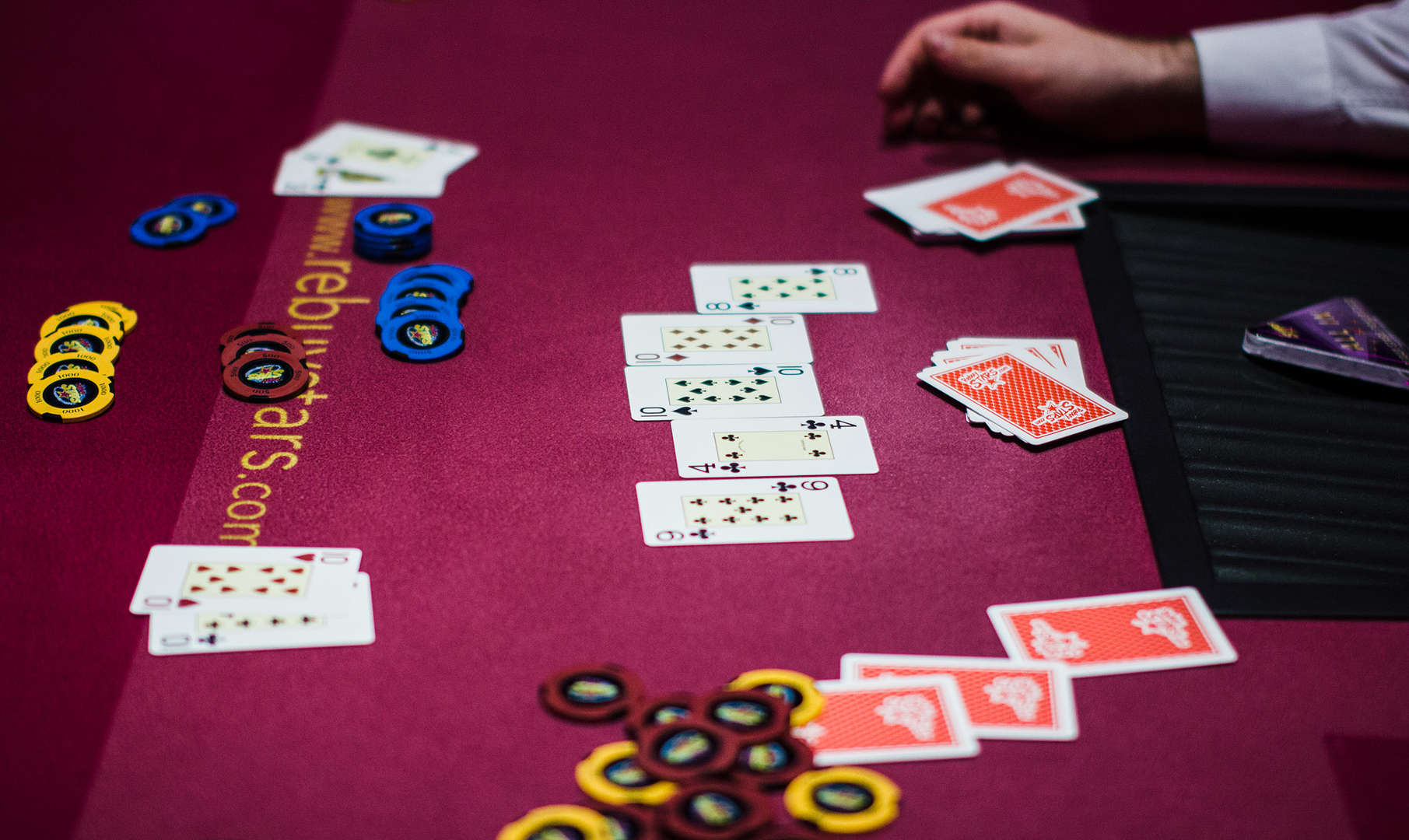
Texas Holdem is played with one deck of 52 cards.
He plays
The game begins with mandatory blinds, then each player is dealt two hole cards, which he sees and uses only himself. The other five cards are gradually laid out on the table with the color facing up and are common to all players (community card). The first three of the community cards (flop) are dealt at once, the fourth (turn) and the fifth (river) individually.
The player has the option to stay in the game without betting, check, call, bet, raise or fold. The poker game ends by showing the cards of the remaining players and comparing the winning combinations (showdown). The player with the highest hand wins the pot.
The game is divided into four rounds of betting, betting takes place around the table from left to right in a clockwise direction. Betting starts from the position next to the dealer, this position moves one player to the left after each game. The dealer's position is marked with a token (dealer button).
Blind bets (1st round of betting)
Before the game begins, the two players to the left of the dealer place a "blind" bet, which is called because players must bet without seeing any cards beforehand. Blinds ensure that there is money in the pot at the very beginning of the game. The first player to the left of the dealer places a "small blind" and the second player to the left of the dealer places a "big blind".
Pre-Flop (pre-flop)
Now the dealing of cards begins. Each player is given two hole cards, which only he sees. Then the first round of betting begins, the first player to the left of the big blind begins, the third player behind the dealer. This player known as "under the gun" can:
Call (call)
the same amount as the big blind
Raise
increase the bet amount
Fold
fold your cards and give up your bets
Since there is a big blind bet on the table, it is not possible to stay in the game without betting with the exception of big blind players.
Once betting returns to the player who made the big blind (the first full bet), that player can check, ie stay in the game, without adding anything to the pot. However, if one of the players raises, the big blind has three options: he must fold, call or raise again.
Flop (2nd round of betting)
The dealer lays three cards on the table, common to all players, face up (flop). Each player can use the cards on the table, along with those on his hand, to make a winning combination. The second round of betting follows. Betting is governed by the same rules as in the previous round. Until no one places, it is possible to stay in the game without betting, after the bet it is only possible to call a call, raise or fold.
Turn (3rd round of betting)
During the tour, the dealer is dealt a fourth community card face up on the table. This card can also be used to create a winning combination. The third round of betting follows. Betting is governed by the same rules as in the previous round.
River (4th round of betting)
The dealer adds a fifth card (river) to the table, the last card that can be used to make a winning combination. Betting is governed by the same rules as in the previous round. The poker game ends in two ways. Either one player forces the other players to fold and wins the pot without having to show the cards, or more players remain in the last round. They then show their cards and compare their winning combinations (showdown). The player with the highest hand wins the pot. If two or more players have the same hand, then the pot is split equally between them.
Examples of game options
- One couple
Any two cards of the same value, e.g. Two kings. - Two pairs
Twice any two cards of the same value, e.g. Two sixes and two aces. - Three of the same kind
Any three cards of the same value, e.g. Three cards with a value of 5. - Straight
Any five cards of successive value, regardless of suit, e.g. 4, 5, 6, 7.8. - Flush
Any five cards of the same suit, regardless of the sequence of values, e.g. Five diamond cards. - Full House
Any three cards of the same value in combination with two other cards of the same value, e.g. Three tens and two sixes. - Four of the same kind
Any four cards of the same value, e.g. Four eights. - Straight Flush
Any five cards of successive value from the same suit, e.g. Heart 6, 7, 8, 9 and 10. - Royal Flush
The top five cards of the same suit, e.g. Green 10, bottom, fillet, king and ace. - High Card
If none of the players has any of the above options, the one with the highest card wins.
